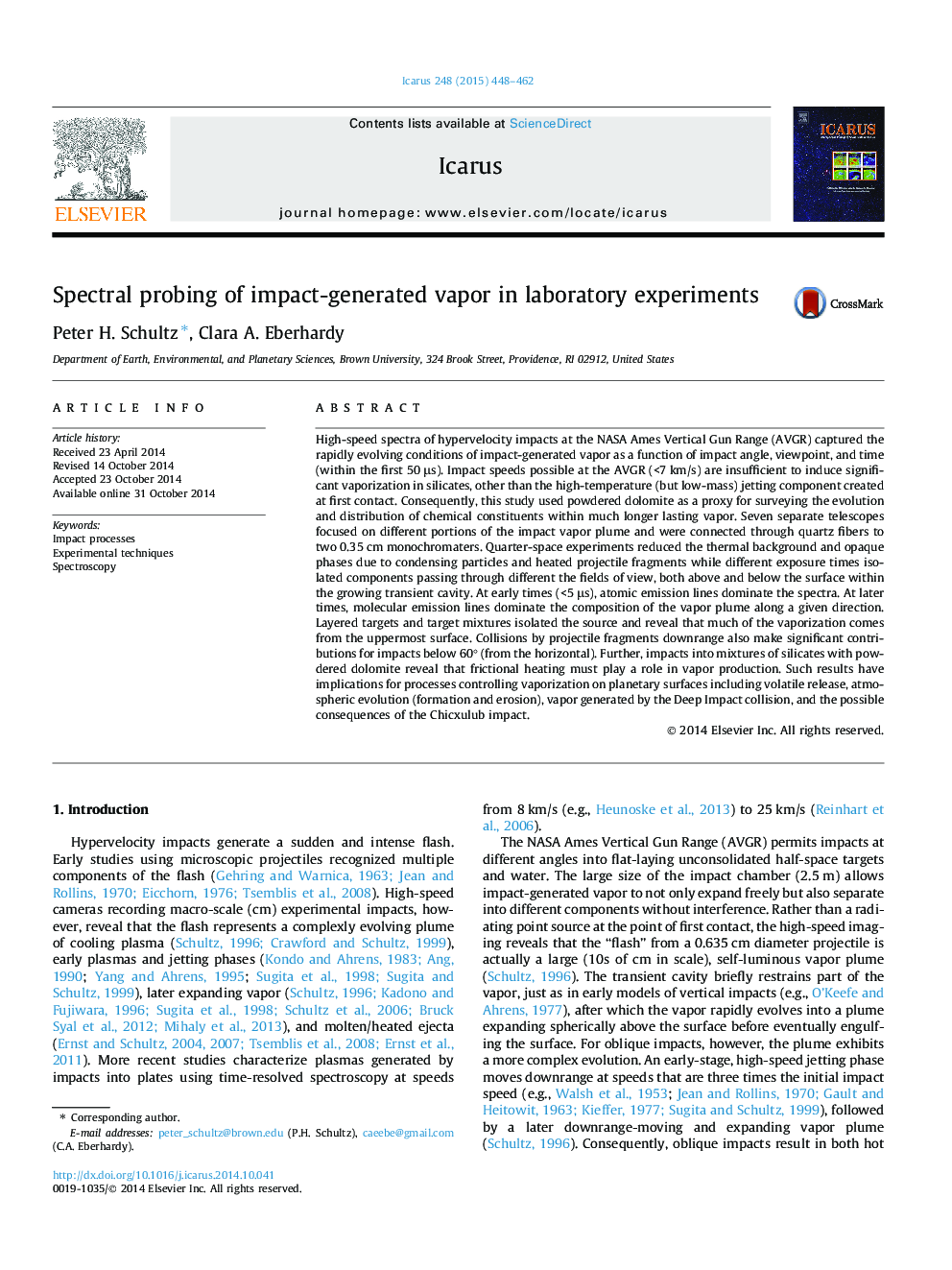| Article ID | Journal | Published Year | Pages | File Type |
|---|---|---|---|---|
| 8137208 | Icarus | 2015 | 15 Pages |
Abstract
High-speed spectra of hypervelocity impacts at the NASA Ames Vertical Gun Range (AVGR) captured the rapidly evolving conditions of impact-generated vapor as a function of impact angle, viewpoint, and time (within the first 50 μs). Impact speeds possible at the AVGR (<7 km/s) are insufficient to induce significant vaporization in silicates, other than the high-temperature (but low-mass) jetting component created at first contact. Consequently, this study used powdered dolomite as a proxy for surveying the evolution and distribution of chemical constituents within much longer lasting vapor. Seven separate telescopes focused on different portions of the impact vapor plume and were connected through quartz fibers to two 0.35 cm monochromaters. Quarter-space experiments reduced the thermal background and opaque phases due to condensing particles and heated projectile fragments while different exposure times isolated components passing through different the fields of view, both above and below the surface within the growing transient cavity. At early times (<5 μs), atomic emission lines dominate the spectra. At later times, molecular emission lines dominate the composition of the vapor plume along a given direction. Layered targets and target mixtures isolated the source and reveal that much of the vaporization comes from the uppermost surface. Collisions by projectile fragments downrange also make significant contributions for impacts below 60° (from the horizontal). Further, impacts into mixtures of silicates with powdered dolomite reveal that frictional heating must play a role in vapor production. Such results have implications for processes controlling vaporization on planetary surfaces including volatile release, atmospheric evolution (formation and erosion), vapor generated by the Deep Impact collision, and the possible consequences of the Chicxulub impact.
Related Topics
Physical Sciences and Engineering
Earth and Planetary Sciences
Space and Planetary Science
Authors
Peter H. Schultz, Clara A. Eberhardy,
